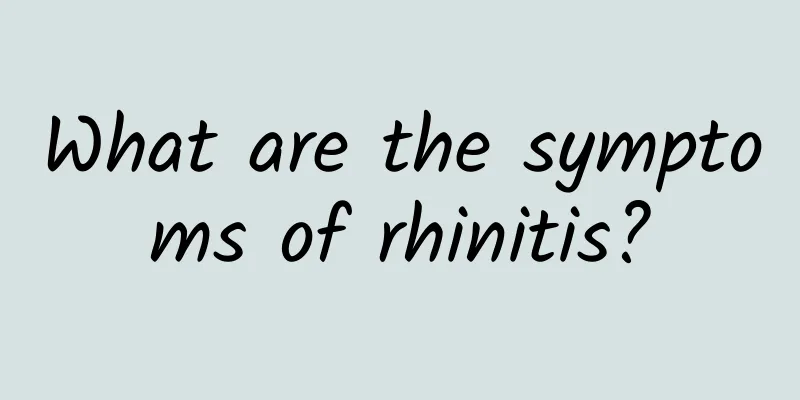What are the adverse reactions of carboplatin injection?

|
Many drugs for treating cancer are used to fight poison with poison, because cancer is the process of some cells in the body turning into malignant tumors. Drugs for treating cancer can not only kill tumor cells, but also normal cells, causing secondary damage to the patient's body. Carboplatin injection is a drug for treating advanced ovarian cancer. It has also been tried in lung cancer and squamous cell carcinoma, but it can also cause certain harm to the human body. Let me introduce it to you below. Carboplatin injection, indications: This product is suitable for the treatment of advanced epithelial ovarian cancer: 1. Indications This product is suitable for the treatment of advanced epithelial ovarian cancer: 1. First-line treatment. 2. Second-line treatment after failure of other treatments; 3. This product is also suitable for the treatment of small cell lung cancer and head and neck squamous cell carcinoma. 2. Adverse Reactions 1. Hematologic toxicity Myelosuppression is the dose-limiting toxicity of this drug. In patients with normal blood counts before treatment, the incidence of thrombocytopenia (less than 50,000/mm3) was 25%, the incidence of neutropenia (less than 1,000/mm3) was 18%, and the incidence of leukopenia (white blood cell count less than 2,000/mm3) was 14%. The general lowest point is 21 days after treatment (15 days for patients using combination chemotherapy). By the 28th day, 90% of patients have recovered their platelet count to >100,000/mm3; 74% of patients have recovered their neutrophil count to 2,000/mm3; and 67% of patients have recovered their white blood cell count to 4,000/mm3. Myelosuppression may be longer and more severe in patients with renal impairment, those in poor general condition, those over 65 years of age, and those who have received intensive chemotherapy or those who have received cisplatin. Generally speaking, if the regimen recommended by Bertinam is used as a single-agent chemotherapy, bone marrow suppression is reversible and non-cumulative. The incidence of infectious and bleeding complications was 4% and 5%, respectively. < 1% of patients may die from this hematologic toxicity. Among patients with normal hemoglobin before treatment, 71% developed decreased hemoglobin (less than 11g/dL) after using this drug. The incidence of anemia increased with increasing medication use. Renal toxicity In general, nephrotoxicity is not dose-limiting and does not require preventive measures such as hydration or diuretics. Increased blood urea nitrogen or serum creatinine occurred in 6-15% of patients, and increased uric acid occurred in 5% of patients. The incidence rate will be reduced in patients with 27% creatinine clearance greater than 60ml/min. The incidence and severity of nephrotoxicity may be increased in patients with impaired renal function prior to treatment. It is unclear whether adequate hydration can prevent or reduce the occurrence of this toxicity. In case of severe renal impairment, the dose must be reduced or treatment must be discontinued. Decreases in serum electrolytes (magnesium, potassium, sodium and rarely calcium) have been reported following administration of bortezomib. 2. Gastrointestinal toxicity: 15% of patients experience nausea without vomiting, 65% of patients experience nausea, and about 1/3 of patients experience severe vomiting. Retreated patients (especially those who have used cisplatin) are more prone to vomiting. Nausea and/or vomiting usually stops within 24 hours of medication and can be prevented by antiemetics. Prolonging the administration time of this drug (continuous infusion for 5 consecutive days) has a lower incidence of vomiting than single-dose intermittent administration. When this drug is used in combination chemotherapy with other drugs that have emetic effects, vomiting may increase. Other gastrointestinal side effects included abdominal pain (17%), diarrhea (6%), and constipation (6%). The exact effect of this product on these side effects is not clear. 3. Allergic reactions Allergic reactions such as rash, urticaria, erythema, purpura, rarely bronchospasm and hypotension occurred in less than 2% of patients receiving Biltin treatment. These reactions are similar to those of other platinum-based drugs and generally occur within minutes of injection. 4. Ototoxicity: 15% of patients may develop subclinical high-frequency hearing loss (4000-8000Hz) after receiving BARDIN treatment, but only 1% of patients experience clinical symptoms, most of which are tinnitus. If hearing loss occurred during previous cisplatin treatment, it may persist or worsen after treatment with cisplatin. 5. Neurotoxicity: The incidence of peripheral neuropathy after treatment with this drug is 4%, and most cases are limited to paresthesia and decreased deep tendon reflexes. The incidence and severity of these side effects are increased in patients who have previously received cisplatin or who have received long-term treatment with this product. Preexisting paresthesias, particularly those that developed after cisplatin therapy, may persist or worsen after treatment with bortezomib. Central symptoms were observed in 5% of patients, most of which were related to the use of antiemetics. The incidence of cumulative neurotoxicity may increase when Bofuranov is combined with other drugs and/or the treatment duration is prolonged. 6. Hepatotoxicity: One-third of the patients with normal baseline liver function values developed mild to moderate changes in liver function after receiving berdin treatment. Increased alkaline phosphatase (24%) was more common than changes in SGPT, SGOT (15%) and total bilirubin (5%). Usually, these changes are reversible on their own. Severe liver damage has been seen in patients taking large doses. 7. Other Reactions Among patients treated with Biltin, the incidence of decreased serum sodium, potassium, calcium and magnesium was reported in 29%, 20%, 22% and 29% respectively. Hyponatremia has been reported occasionally. Other toxicities associated with bortezomib treatment included taste changes (rare), alopecia (3%), asthenia (8%), and fever and chills not caused by infection or allergy. Hair loss and weakness are more common when Biltin is combined with other chemotherapy drugs. The incidence of adverse reactions in the respiratory system, cardiovascular system, mucous membranes, genitourinary system, skin, muscles, and bones was less than 5%. The incidence of cardiovascular death (heart failure, embolism, cerebrovascular accident) is less than 1%. It is unclear whether this death was related to chemotherapy or general condition. There have also been reports of hypotension since its launch on the market. |
<<: Calf spleen extract injection
>>: Naproxen injection adverse reactions
Recommend
What causes pain in the bone joints?
The hardness of human bones changes with age, so ...
What medicine is used for skin inflammation
What medicine to use for skin inflammation is a q...
What is obstructive pulmonary disease? Be alert to these reasons
Nowadays, the incidence of obstructive pulmonary ...
What to do if your eyes are dry and itchy
For people who work in the office for a long time...
What are the bad effects of eating apples at night?
Apple is one of the most common fruits. Many plac...
How to quickly relieve tooth decay pain, Chinese medicine remedies to quickly relieve pain
Toothache caused by tooth decay is a very torturo...
Erosive gastritis
There are many common types of diseases, and diff...
Can a hemangioma go away on its own?
Hemangioma is a relatively common disease. In gen...
Symptoms and treatment of urticaria in children
Infantile urticaria is actually a type of urticar...
Brown vaginal discharge during ovulation, pregnant
Normal leucorrhea of women is colorless, odorle...
What are the effects and functions of using ginger to wash your hair?
Ginger is a food that everyone is familiar with. ...
Can Guizhi Decoction cure urticaria? The old Chinese doctor said
Urticaria, as a very terrible skin disease, bring...
Why does my right eye keep twitching?
Many people always think that eye twitching indic...
What are the symptoms and treatment of anal atresia?
Anal atresia is a physical defect. The main cause...
Can neonatal intrauterine infection be cured?
Intrauterine infection of newborns is very harmfu...









